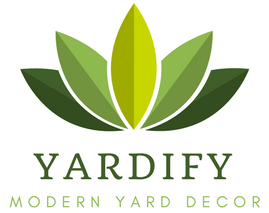The Importance of Choosing the Right Pot Shape and Size for Plant Growth and Health
The right pot can make all the difference in the growth and health of your plants. As a plant's pot is its palace, it's essential to choose one that will allow it to flourish and thrive. In this article, we will explore the impact of pot shape and size on plant growth and health, and provide you with a comprehensive guide to choose the best pot for your plant.
One of the most critical factors in choosing the right pot is size. If a pot is too small, it may not have enough room for the plant's roots to grow, leading to stunted growth. On the other hand, if it's too big, the soil may become too moist, leading to root rot. That's why it's crucial to choose a pot that is the right size for your plant.
Pot shape is another crucial factor to consider. Round pots allow for better root growth and air circulation, while square pots are great for creating a cohesive design in your landscape. Make sure to choose a pot that fits the natural growth habit of your plant and allows for enough space for roots to grow.
In conclusion, the shape and size of a pot play a crucial role in the growth and health of your plants. By choosing the right pot for your plant, you can ensure that it has a safe and suitable space to grow and flourish. So, take your time to choose the best pot and make sure to follow our guide for a successful landscape design.
Do you know that the container you choose for your plants can greatly impact their growth and health? With so many different shapes, sizes, materials, colors, styles, and weights of pots available, choosing the right one can be a daunting task. But don't worry, we've got you covered! In this ultimate guide, we will walk you through the key factors to consider when choosing the best shape and size of pots for your plants.
Body:
-
Plant Size and Root System: It is important to choose a pot that is proportional to the size of your plant and accommodates its root system. If the pot is too small, the plant will become root-bound, causing stunted growth. On the other hand, if the pot is too large, the soil will stay too moist, leading to root rot.
-
Drainage: Proper drainage is crucial for the health of your plants. Make sure the pot you choose has enough holes to allow excess water to drain out.
-
Material: The material of the pot can affect the temperature of the soil and the plant's roots. Terracotta and clay pots are porous, allowing air and moisture to circulate, but they can also get very hot in direct sunlight. Plastic pots are lightweight and durable, but they don't offer much insulation.
-
Style and Color: While style and color may seem like minor factors, they can greatly impact the look of your landscape design. Choose pots that complement your home's architecture and garden style. Also, consider the color of the pot as it can affect the temperature inside and the appearance of your plants.
Choosing the right shape and size of pots for your plants is essential for their growth and health. By considering the plant size and root system, proper drainage, material, style, and color, you can ensure that your plants will thrive in their new home. Happy planting!
What Does Plant Size Mean?
Plant size is often described in inches or gallons, but this does not refer to the actual plant itself. Instead, it refers to the diameter of the pot that the plant is growing in or the volume of the container. A 10" plant, for instance, is a plant growing in a pot with a 10" diameter or 2.5 to 3 gallons.
The most common pot sizes follow a 2" increment system, starting from 2" and increasing to 4", 6", and beyond, with some pots even reaching 60 inches in size.
For indoor plants, smaller pot sizes are generally preferred as they are easier to move and can be placed on shelves and tables. Outdoor plants, on the other hand, require larger pots for stability in wind and other outdoor conditions.
Importance of Pot Size for Plant Health
Choosing the Right Container is Critical When it comes to selecting the perfect pot for your plant, size matters. A pot that is too big or too small can have serious consequences for the health and growth of your plant.
Bigger Isn't Always Better While a larger pot can lead to increased growth in some plants, it's essential to provide proper water levels, food, and soil mixture for the plant's health. If the pot is too large and poorly drained, the soil could remain damp and increase the risk of root rot. On the other hand, a large pot with too little water can lead to dry soil.
Aesthetics Matter Too A pot that is not proportionate to the plant can also affect the overall appearance of your landscape design. Choosing the right size pot is a delicate balance between promoting healthy growth and maintaining an aesthetically pleasing look.
The Consequence of Using Small Pots
Placing your plant in a pot that is too small can have negative effects on its growth. Root-bound plants can lead to slow or stunted growth, and larger plants might even fall over due to the limited support offered by a small pot.
Perched Water Table: An Important Factor When selecting the right pot size, it's important to consider the perched water table. This refers to the bottom layer of soil in a pot that remains saturated with water and is not drained out due to the balance of forces between gravity and soil.
The accumulated water at the bottom of the pot can only be utilized by the plant through evaporation or absorption. If the pot is too small or the roots are positioned too close to the perched water table, it can harm the plant's growth and health.
What Is The Optimum Planter Size?
Fiberglass planters come in a range of sizes, from 10 inches to 60 inches in diameter. The appropriate pot size for your plants will depend on the type of plant and how many plants you want to grow.
For serious container gardening, consider these guidelines:
-
A 10-inch container is suitable for small fruits and herbs, such as one strawberry plant and a few small herbs like chives, parsley, mint, or sage, or up to three annuals.
-
A 14-inch container is ideal for leafy vegetables and larger herbs, such as four pea plants, one leafy lettuce, spinach, cabbage, or arugula, and larger herbs like rosemary or lavender, or three to four annuals.
-
A 16-inch container can accommodate larger fruit plants and small trees, such as four to six annuals, one small shrub, one dwarf citrus tree, and one bushy fruit tree like raspberry or blueberry.
-
An 18-inch container is perfect for larger vegetables and groups of herbs, such as one broccoli, cauliflower, eggplant, tomato, or pepper plant, a mix of herbs, and a mix of annual flowers.
-
A 24-inch container is suitable for medium-sized trees and shrubs, such as one cucumber or summer squash, one fig, dwarf peach, or nectarine tree, one decorative shrub like hydrangea, and one evergreen shrub.
-
A 30-inch container can handle the big boys, such as one orchard fruit tree like apple, pear, cherry, or plum, one sweet corn, and one pumpkin or rhubarb.
Easy Plant Pot Size Chart And Recommended Plants
What to Do When a Plant Gets Too Big
Re-potting your plant every year or two may be necessary as it grows. Choose a pot that is 1-2 inches larger than the previous pot if it is currently 10 inches or smaller. If the container is larger than 10 inches, go for a pot that is 2-4 inches larger. This process of transferring a plant from a smaller pot to a larger pot is called "potting up".
Does Pot Shape Affect Plant Growth? Pot shape can impact the appearance and ease of care for your garden, but it's not the most significant factor in container gardening.
Types of Plant Pots
-
Square Containers - These containers, like the Bergen Tapered Square Planter, provide a neat arrangement and are great for decoration along a pathway or entrance. They make watering easier as there are fewer gaps between planters for water to fall through. Square pots offer more volume and surface area for planting than round pots, making them suitable for growing rows of flowers or herbs.
-
Rectangular Containers - Rectangular planters like the Jay Scotts Torino Rectangular Planter are practical for planting an even row of flowers, vegetables, or hedges. Remember to drill holes in the bottom for proper drainage.
-
Round Containers - Round planters are commonly used for small herbs, vegetables, and flowers. They are not ideal for large plants as they tend to tip over easily and do not allow for even growth. A round planter is better for a single plant or just a few plants. The Alzira Bowl Planter is a popular round planter due to its stability and modern style.
Tall or Short Pots Tall pots have a larger air to water ratio and provide better gas exchange, making them a better choice for most plants. However, succulents and cacti prefer shallow containers.
Drainage Holes in Planters
It is recommended to choose a container with drainage holes for proper watering and to reduce the risk of root rot. Place a saucer under the planter to hold any leaking water.
Thickness of Planters The thickness of the planter also affects plant growth. Thicker planters provide better insulation from harsh outdoor temperatures and protect the plant from temperature swings. Our fiberglass planters are made with thick fiberglass sheets to ensure plant health and durability.
Yardify Planters We offer a variety of planters for home and commercial use, including low and tall rectangular planters that are suitable for planting shrubs, bushes, and rows of flowers. Check out our options to find the best fit for your project.




